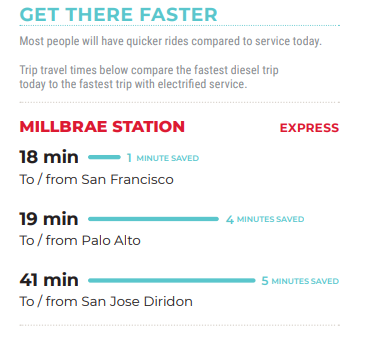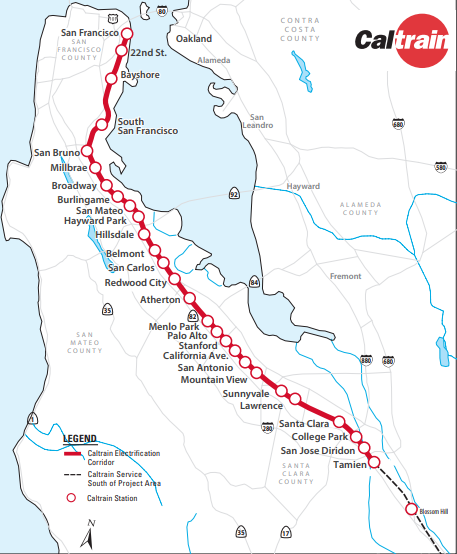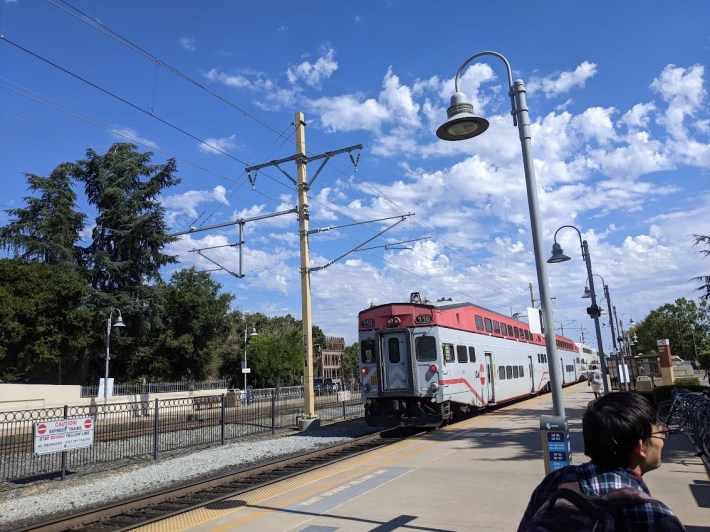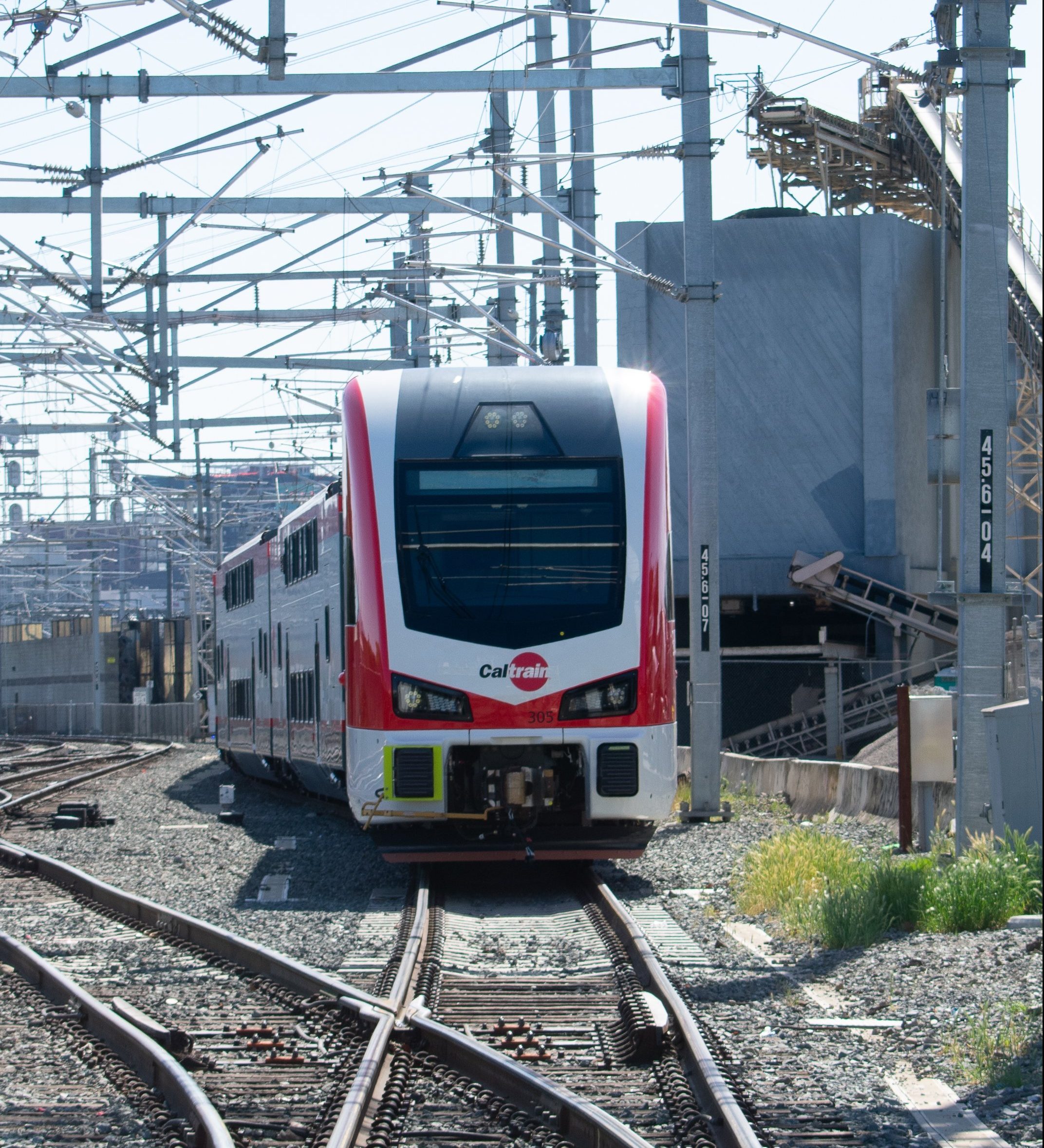Note: GJEL Accident Attorneys regularly sponsors coverage on Streetsblog San Francisco and Streetsblog California. Unless noted in the story, GJEL Accident Attorneys is not consulted for the content or editorial direction of the sponsored content.
Caltrain suspended passenger service this weekend in order to do a full-power test of its new electric infrastructure by running eight of its new electric multiple-unit (EMU) train sets simultaneously up and down the line. This produced the kind of power draw the new electrical systems will have to support in regular service. “Long story short, successful test,” wrote Caltrain spokesperson Dan Lieberman in an email to Streetsblog. That means Caltrain is full steam ahead (or should that be full wattage ahead?) for the launch of electric service on September 21. More from Caltrain:
Upon the substantial completion of all major construction for Caltrain Electrification, the agency conducted a successful test of eight [electric] trains running simultaneously on the corridor. This marks the final corridor wide test before the launch of electrified service in September, as well as the last weekend service change for the Electrification project.
For the past eight years, construction has gone on day and night, including locating underground utilities, testing soil conditions, inspecting signal and communication equipment and pruning and removing trees. The project team installed over 2,500 pre-engineered poles and strung over 2.6 million feet of wire to support the Overhead Contact System (OCS) which provides power to the fleet of new, high-performing electric trains.
When the electric trains go into service, express San Francisco to San Jose runs will take under an hour. More details below:

Time savings will be more significant on locals because of the much better acceleration of the EMUs over the old diesel-hauled trains. The new scheduled will be available in early summer, said Lieberman.
In addition, thanks to the passage of 2020’s Measure RR (thanks advocates!) the Peninsula’s commuter railroad will offer peak-hour trains every 15-20 minutes and trains every half hour during mid-day, evenings, and weekends (it currently only runs hourly service on weekends).

The Caltrain electrification project broke ground in the summer of 2017. It’s part of a series of upgrade projects, including adding passing tracks to create “baby bullet” express services (completed in 2004), grade-crossing eliminations, and, in the future, a direct connection to the Salesforce Transit Center in downtown San Francisco.
I’ve lived in the Bay Area for 5 years, and I can confidently say that the @Caltrain electrification is one of the most inspiring pieces of technology I’ve seen.
Our future is so bright, friends pic.twitter.com/zKS9tfGboS— Squash (@squashmoen) June 10, 2024
Eventually, high-speed rail will also use the corridor to reach downtown. Further upgrades will permit the new electrified Caltrain trainsets to go even faster than they will when the system initially launches this fall.

That doesn’t mean, however, that all of the old diesel-hauled trains are going to disappear from Caltrain’s mainline come September. Caltrain will be sending its oldest coaches, the gallery cars, to the scrapper. They were built over fifty years ago (although they’ve obviously been rehabbed several times). But since electrification won’t extend south of Tamien for many years yet (see map above) Caltrain will retain its newer bilevel cars from Bombardier (photo below) and some diesel locomotives:

Even those few diesel trains, however, will eventually go to the scrap heap when Caltrain gets battery-electric trains. These will use overhead catenary wires just like a normal EMU but will be able to continue running into non-electrified territory on batteries alone. So far, confirmed Liberman, they don’t have a timeframe for this last step in the transition to an all-electric railroad.
The post Caltrain Passes Weekend Test appeared first on Streetsblog San Francisco.
The post Caltrain Passes Weekend Test appeared first on Streetsblog California.





